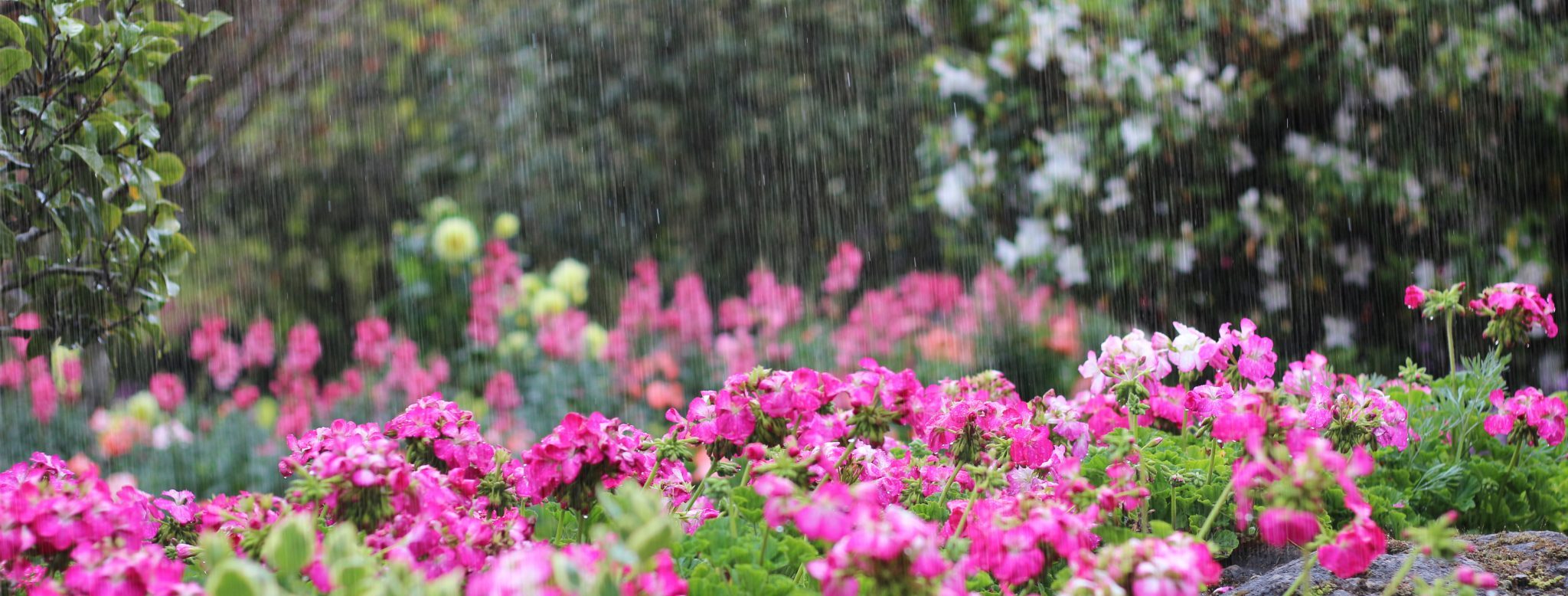Fish & Water

Routine Weeding, Pruning, and Mulching
Sediment and debris removal. Periodically, remove sediment and other debris that build up in your rain garden.
Mulch replacement. Mulch should be maintained at a 3-inch depth, and bare areas should be replaced as needed. Full mulch removal and replacement should occur every 2 to 3 years or when mulch has become matted and prevents adequate infiltration of stormwater.
Pruning. Shrubs will benefit from annual pruning to encourage bud break and help maintain plant shape and form.
Avoid Overwatering
Drought-tolerant plants need to establish deep roots during the first few years to withstand dry conditions. Overwatering might discourage this crucial development. When consistent heavy rain events occur, you may experience flooding or extended periods of standing water in your garden. If this happens frequently, you may want to consider expanding your garden or amending your soil (especially heavy clay soils characteristic of Alabama).
Rain gardens don’t have to be the only design in your landscape that helps capture, filter, and infiltrate stormwater. You can make many small changes in your home landscape to make a difference (figure 43). Read more about those options in the Low Impact Design Handbook for Alabama or in the Alabama Watershed Stewards Handbook.

Figure 43. Example of the multiple practices that could be installed around your home to improve water quality: (1) rain garden site, (2) rain barrel, (3) permeable pavement, and (4) more trees and vegetation.
 This is an excerpt from How to Install a Rain Garden, ANR-2768.
This is an excerpt from How to Install a Rain Garden, ANR-2768.
Laura Bell, Project Coordinator; Eve Brantley, Water Resources Specialist and Professor; Caitlin Sweeney, Assistant Coordinator; and Naomi Pitts, Assistant Coordinator, all with Alabama Extension Water Program at Auburn University

